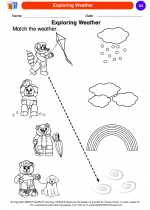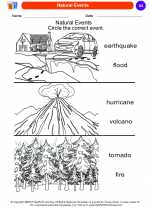How Fossilization Occurs
Fossilization occurs in several steps. The first step is the burial of the remains of an organism. This can happen through sedimentation, where layers of sediment gradually cover the remains over time. The next step is mineralization, where the organic material of the organism is replaced by minerals, such as silica, calcite, or iron. This process creates a fossil, which is a replica of the original organism in stone.Types of Fossils
There are several types of fossils that can form through different processes:- Body Fossils: These are formed when the actual remains of an organism, such as bones, teeth, or shells, are preserved and turned into stone.
- Trace Fossils: These are formed from traces left by organisms, such as footprints, burrows, or feces, which are preserved in sedimentary rock.
- Chemical Fossils: These fossils are formed when organic molecules are preserved in rocks, providing evidence of ancient life.
Importance of Fossilization
Fossilization is important because it provides a record of past life on Earth, allowing scientists to study the diversity of ancient organisms, their behaviors, and their interactions with the environment. Fossils also provide evidence for the theory of evolution, helping scientists understand how species have changed over time.Study Guide for Fossilization
To understand fossilization, students can explore the following topics:- The process of fossilization and the different steps involved.
- The types of fossils that can form and the differences between body, trace, and chemical fossils.
- The importance of fossilization in understanding the history of life on Earth and the principles of evolution.
- Examples of famous fossil discoveries and their significance in scientific research.
[Fossilization] Related Worksheets and Study Guides:
.◂Science Worksheets and Study Guides Kindergarten. Weather
Coloring Worksheet Calendar
Calendar  Coloring Worksheet
Coloring Worksheet Calendar
Calendar  Coloring Worksheet
Coloring Worksheet Day and Night
Day and Night  Coloring Worksheet
Coloring Worksheet Day and Night
Day and Night  Coloring Worksheet
Coloring Worksheet Exploring Weather
Exploring Weather  Coloring Worksheet
Coloring Worksheet Exploring Weather
Exploring Weather  Coloring Worksheet
Coloring Worksheet Look at the Clouds
Look at the Clouds  Coloring Worksheet
Coloring Worksheet Look at the Clouds
Look at the Clouds  Coloring Worksheet
Coloring Worksheet Moon & Stars
Moon & Stars  Coloring Worksheet
Coloring Worksheet Moon & Stars
Moon & Stars  Coloring Worksheet
Coloring Worksheet Natural Events
Natural Events  Coloring Worksheet
Coloring Worksheet Natural Events
Natural Events  Coloring Worksheet
Coloring Worksheet Sun and Shadows
Sun and Shadows  Coloring Worksheet
Coloring Worksheet Sun and Shadows
Sun and Shadows  Coloring Worksheet
Coloring Worksheet The Seasons
The Seasons  Coloring Worksheet
Coloring Worksheet The Seasons
The Seasons  Coloring Worksheet
Coloring Worksheet Things in the Sky
Things in the Sky  Coloring Worksheet
Coloring Worksheet Things in the Sky
Things in the Sky  Coloring Worksheet
Coloring Worksheet Weather Tools
Weather Tools  Coloring Worksheet
Coloring Worksheet Weather Tools
Weather Tools 

 Coloring Worksheet
Coloring Worksheet
 Coloring Worksheet
Coloring Worksheet
 Coloring Worksheet
Coloring Worksheet
 Coloring Worksheet
Coloring Worksheet
 Coloring Worksheet
Coloring Worksheet
 Coloring Worksheet
Coloring Worksheet
 Coloring Worksheet
Coloring Worksheet
 Coloring Worksheet
Coloring Worksheet
 Coloring Worksheet
Coloring Worksheet
 Coloring Worksheet
Coloring Worksheet
 Coloring Worksheet
Coloring Worksheet
 Coloring Worksheet
Coloring Worksheet
 Coloring Worksheet
Coloring Worksheet
 Coloring Worksheet
Coloring Worksheet
 Coloring Worksheet
Coloring Worksheet
 Coloring Worksheet
Coloring Worksheet
 Coloring Worksheet
Coloring Worksheet
 Coloring Worksheet
Coloring Worksheet
 Coloring Worksheet
Coloring Worksheet

The resources above cover the following skills:
EARTH AND SPACE SCIENCE (NGSS)
Earth’s Systems
Students who demonstrate understanding can:
Use and share observations of local weather conditions to describe patterns over time.